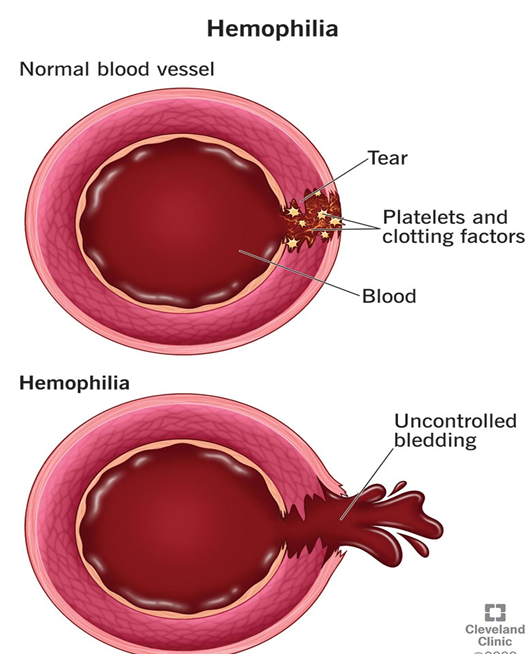A neonate is born with bilateral mild talipes equinovarus (clubfoot). When the parents ask the nurse how this will be corrected, the nurse should give which explanation?
Infants outgrow this condition when they learn to walk.
Surgical intervention is needed.
Traction with foot manipulation is used.
Frequent serial casting is tried first.
The Correct Answer is D
The correct answer is d. Frequent serial casting is tried first
Choice A reason:
Infants do not outgrow clubfoot on their own. Without treatment, the condition can lead to significant disability and difficulty walking. Early intervention is crucial to correct the deformity and ensure proper foot function.
Choice B Reason:
Surgical intervention is not the first line of treatment for mild cases of clubfoot. Surgery is typically reserved for severe cases or when nonsurgical methods, such as casting, have failed. The goal is to correct the foot’s position using less invasive methods whenever possible.
Choice C Reason:
Traction with foot manipulation is not a standard treatment for clubfoot. The primary nonsurgical treatment involves the Ponseti method, which includes gentle manipulation and serial casting to gradually correct the foot’s position.
Choice D Reason:
Frequent serial casting, known as the Ponseti method, is the first line of treatment for clubfoot. This method involves weekly manipulation and casting of the foot to gradually move it into the correct position. It is highly effective and is the preferred initial treatment for most cases of clubfoot.

Nursing Test Bank
Naxlex Comprehensive Predictor Exams
Related Questions
Correct Answer is B
Explanation
Choice A reason:
Basketball, while a popular sport, involves a significant amount of physical contact and the risk of falls and injuries1. For children with hemophilia, engaging in contact sports can increase the risk of bleeding episodes and joint damage. Therefore, basketball is not the most recommended sport for children with hemophilia.
Choice B reason:
Swimming is highly recommended for children with hemophilia because it is a low-impact sport that provides excellent cardiovascular exercise without putting undue stress on the joints. The buoyancy of the water supports the body, reducing the risk of injuries and bleeding episodes. Swimming also helps improve muscle strength and flexibility, which can be beneficial for overall health and well-being.

Choice C reason:
Soccer, like basketball, involves a lot of running, physical contact, and the potential for falls and injuries. These factors make soccer a less suitable sport for children with hemophilia, as it can increase the risk of bleeding and joint damage. Therefore, soccer is not the most recommended sport for children with hemophilia.
Choice D reason:
Skating, whether roller skating or ice skating, carries a risk of falls and injuries. While it can be a fun and enjoyable activity, the potential for accidents makes it less suitable for children with hemophilia. The risk of bleeding episodes and joint damage is higher with activities that involve a significant risk of falls.
Correct Answer is C
Explanation
Choice A reason:
Opioid analgesics are not given as a last resort solely because of the threat of addiction. While the risk of addiction is a concern, opioids are often necessary for managing severe pain, especially in conditions like sickle cell anemia. The American Society of Hematology guidelines emphasize the importance of effective pain management in sickle cell disease, which often includes the use of opioids. The goal is to manage pain effectively while monitoring for signs of misuse or addiction.
Choice B reason:
Opioid analgesics are often ordered and are usually needed for managing severe pain in patients with sickle cell anemia. Pain episodes in sickle cell disease can be extremely severe and debilitating, requiring potent analgesics like morphine for relief. The management of acute vaso-occlusive pain in sickle cell disease often necessitates the use of opioids to provide adequate pain control.
Choice C reason:
Opioid analgesics, when medically indicated and used under proper medical supervision, rarely cause addiction. The risk of addiction is significantly lower when opioids are used appropriately for pain management in a controlled medical setting. The Mayo Clinic highlights that while opioids have addictive properties, their medical use for pain relief, especially in acute settings, is generally safe when monitored by healthcare professionals.
Choice D reason:
Opioid analgesics are not used only if other measures, such as ice packs, are ineffective. While non-pharmacological measures can be part of pain management, opioids are often necessary for managing severe pain episodes in sickle cell disease. The use of opioids is based on the severity of the pain and the clinical judgment of the healthcare provider.
Whether you are a student looking to ace your exams or a practicing nurse seeking to enhance your expertise , our nursing education contents will empower you with the confidence and competence to make a difference in the lives of patients and become a respected leader in the healthcare field.
Visit Naxlex, invest in your future and unlock endless possibilities with our unparalleled nursing education contents today
Report Wrong Answer on the Current Question
Do you disagree with the answer? If yes, what is your expected answer? Explain.
Kindly be descriptive with the issue you are facing.
